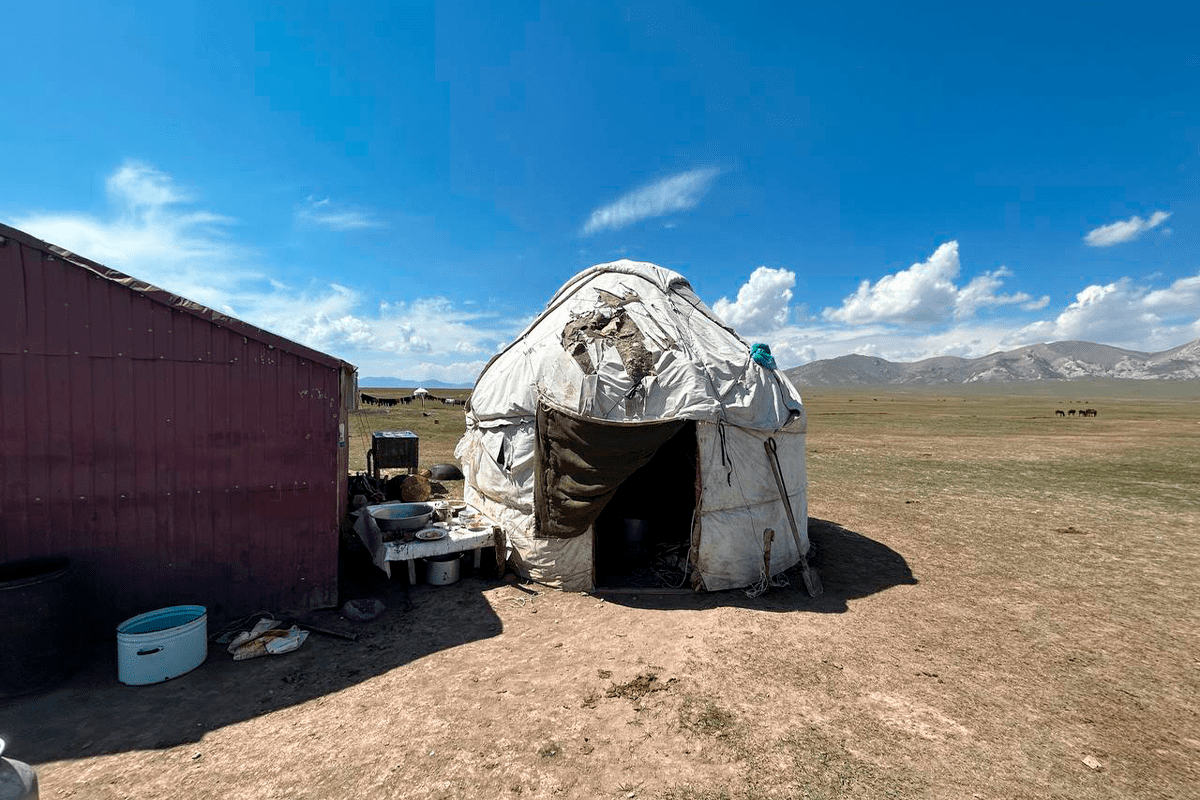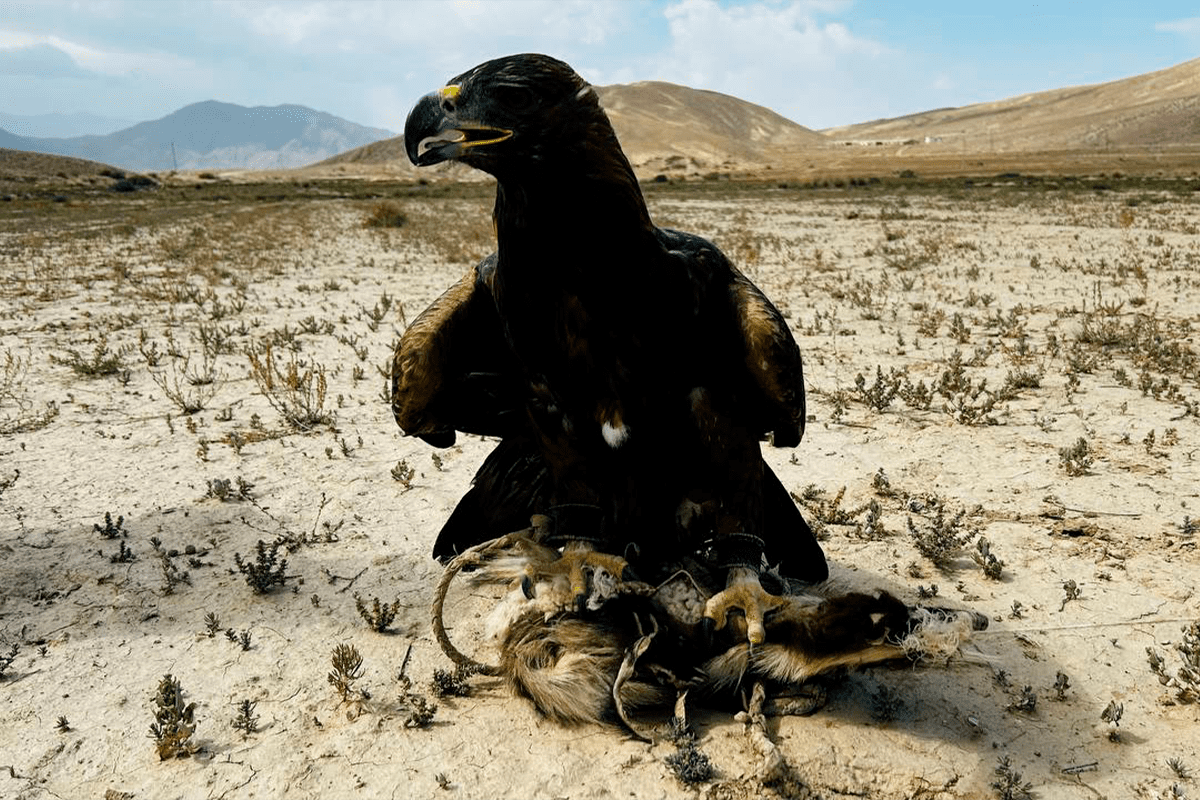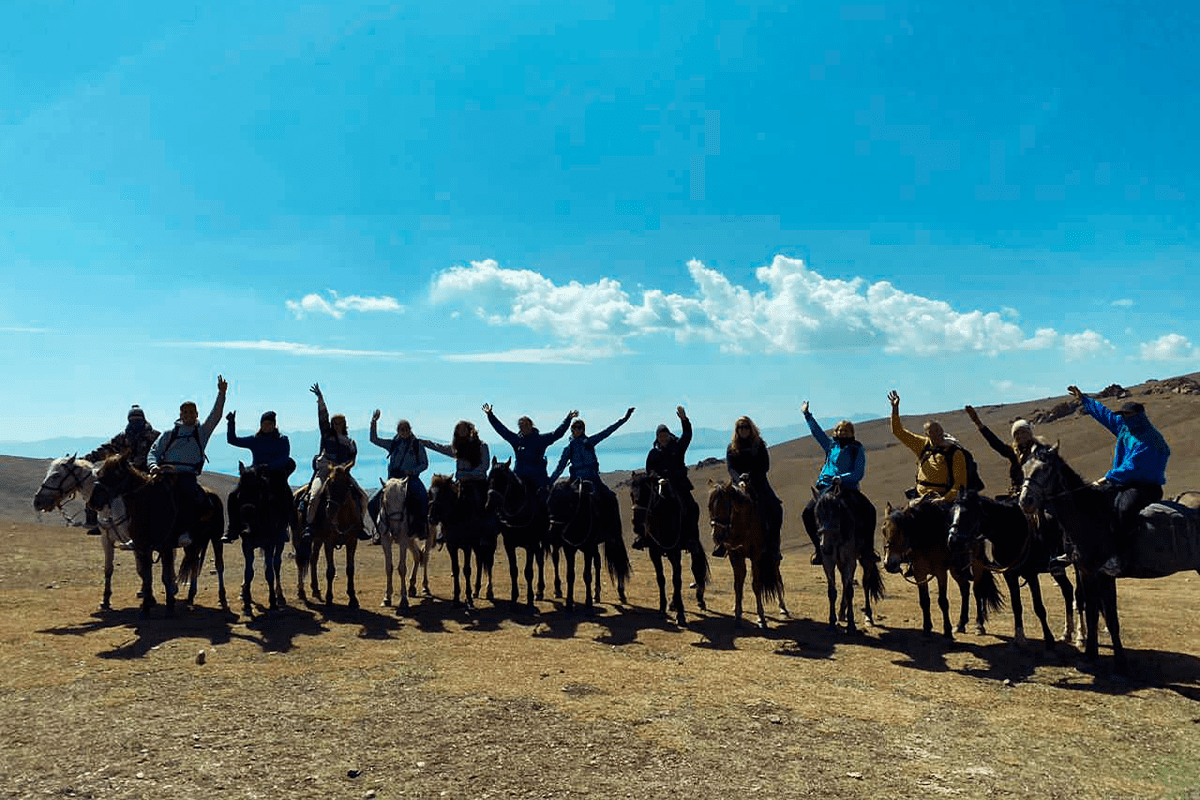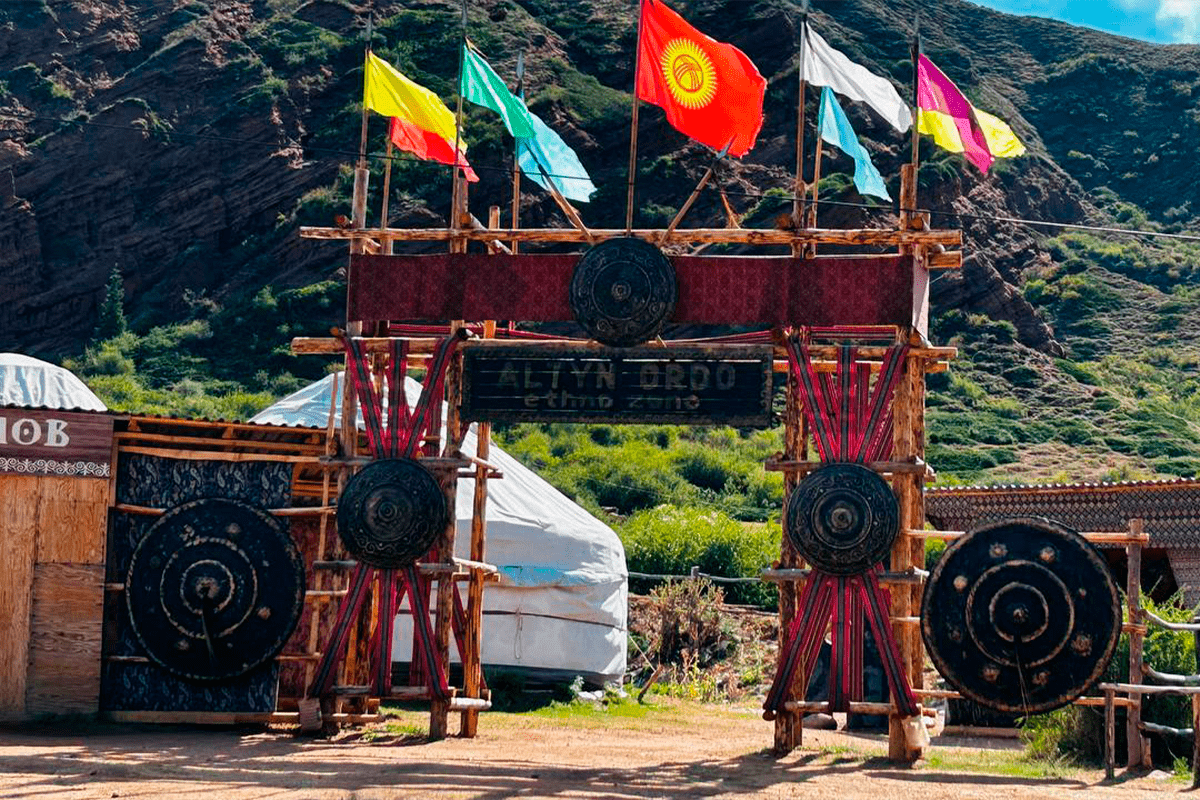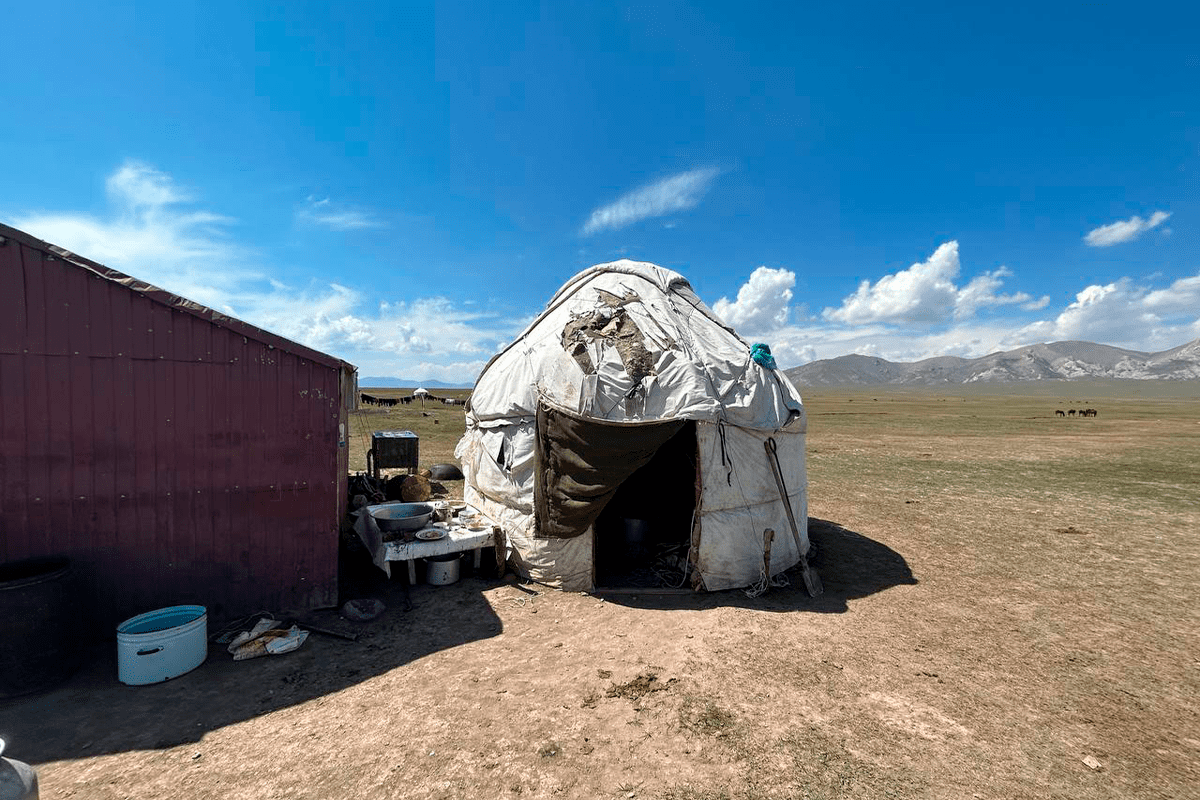The Kyrgyz yurt “Boz Uy is a national symbol.
The traditions of “Boz Uy” are passed down by the Kyrgyz people from generation to generation.
“Boz uy” occupies an important place in the traditional life of the Kyrgyz people. Frequent relocations, moving to the plateau in summer and to colder areas in winter, the constant search for fertile lands and lands suitable for animal husbandry, necessitated the use of Boz by the Kyrgyz.
The popularity of Boz uy among all peoples has increased due to its warm winter and cool summer characteristics, as well as ease of installation and collection.
The history of “boz uy” dates back thousands of years. The proof that yurts appeared in ancient times is the fact that no other materials are used in their manufacture, except wood, animal skins and felt.
The design of the “Boz Uy” is extremely complex. The wooden frame is made by men, and the felt covering is made by women. The frame is made of materials that the Kyrgyz call “kerege”, “uk” and “tunduk”.
“Kerege” is the walls of the yurt, and “uk” is the dome. The chest located at the top of the tent is considered the most important part of the “Boz uy”. It symbolizes the vast universe. The front part of the Boz Uy yurt is also flooded with sunlight, and the chimney of the tent is one of the symbols on the Kyrgyz flag.
Despite the sedentary lifestyle, “Boz uy” is still widespread in Kyrgyzstan and has become one of the symbols of the Kyrgyz national identity. Boz Uy is included in the UNESCO Intangible Cultural Heritage List.
Symbolism, decoration and traditions of the Kyrgyz yurt.
The Kyrgyz have many customs, rituals and specific symbols associated with yurts – the traditional dwellings of the nomadic people, which are still transmitted today. It is important to understand them well.
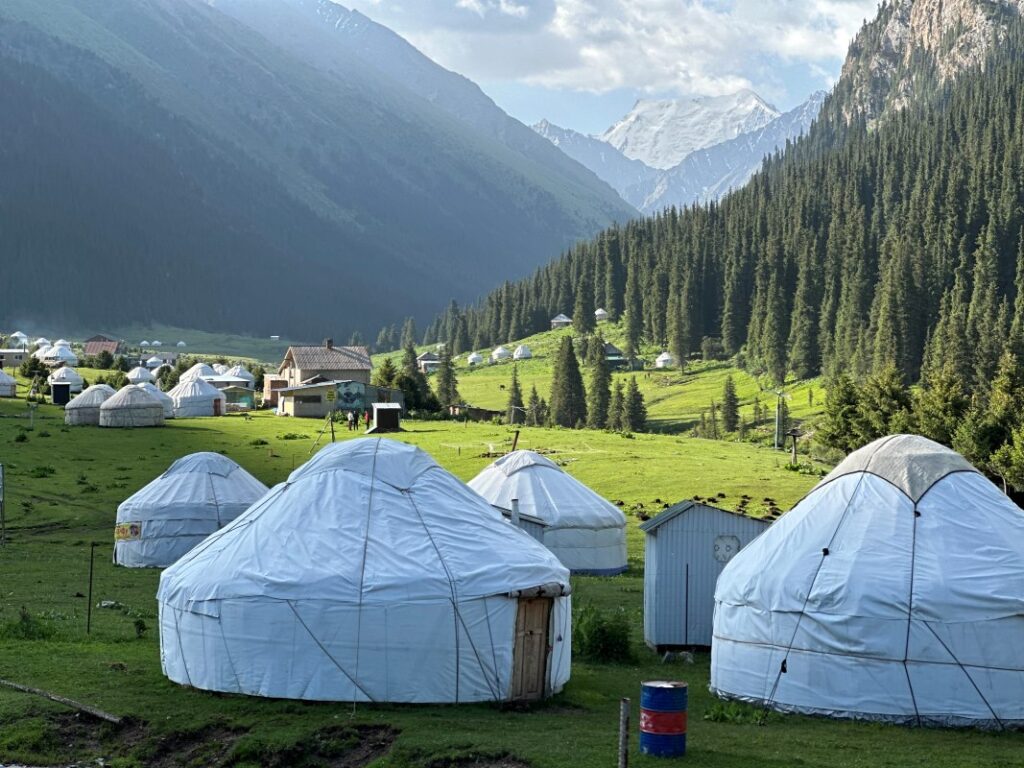
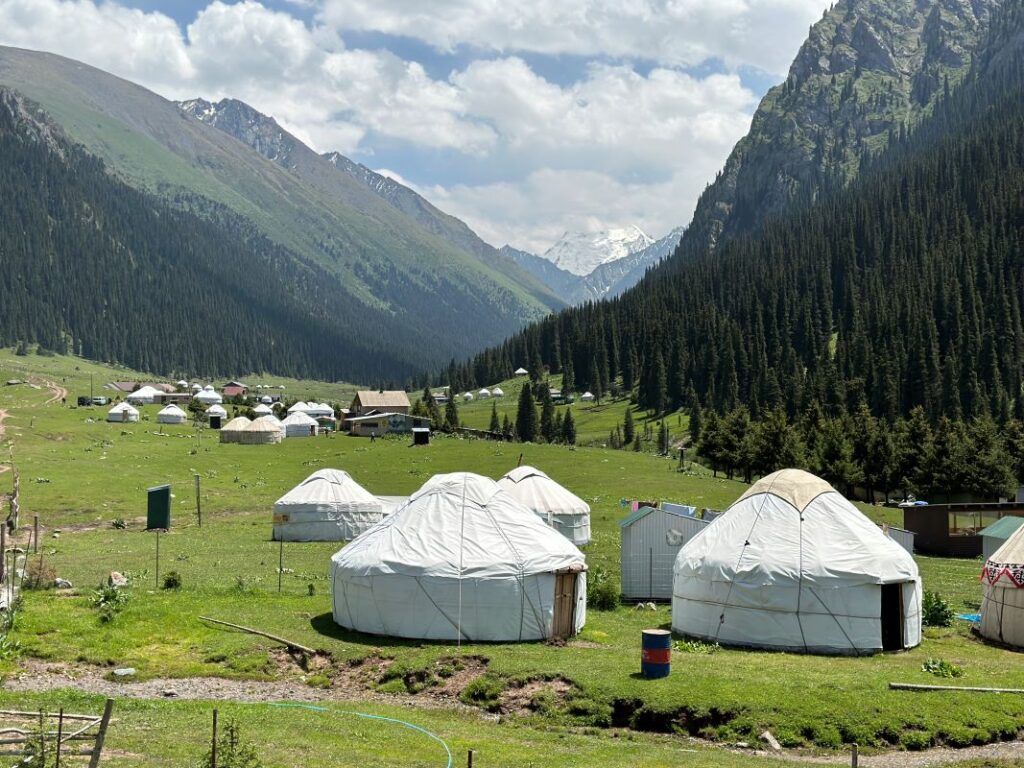
The company “Nomads Life” organizes tours of the ancient traditions of Kyrgyzstan.
The Kyrgyz yurt (“boz uy”) is a symbol of the indigenous hearth, parental home and land. Its outbuildings have always been treated very carefully, and, especially in the cold season, the survival of the shepherd’s family depended on the yurt. The owner of the yurt – “uychu” and the craftsmen engaged in the manufacture of the yurt and its elements, as well as the interior decoration – “uzdar” enjoyed special respect.
Instead of food and kitchen utensils, the well-to-do Kyrgyz had a heavy object containing beautiful dishes and drinks for guests, and another small yurt – “ashkana” – was put up for cooking and storing food.
The left half of the yurt from the entrance was intended for men and was called “er Jacques”. Middle-aged and young men were accommodated here, men’s clothes and hats were hung, and harnesses and tools were placed closer to the entrance.
Opposite the entrance to the yurt, called “tor”, a place was set aside for honored guests and respected family members, the best chests with rows of the most beautiful blankets and toshok, felt carpets and furs of wild animals were displayed here. The higher the row, the larger and brighter the pile of patterned felt and blankets, the richer the owner was considered. The Tor, located under the tunduk, was the center of yurt life. A bonfire was lit here, food was cooked, a dostarkan (tablecloth) with treats was spread out in front of the guests, unhurried conversations and trade were conducted.
Rich Kyrgyz had several yurts: one for guests, one for a married son and one for a second young wife – “kelin”. Rich families also had separate yurts (marriage yurts) for the newlyweds. Poorer families could not afford such a yurt and simply covered the left half of the yurt with a curtain for a young man, cutting off part of the “male” part.
There were many ancient customs and traditions in yurts. After the death of a family member, all decorations and attributes were removed, only felt carpets “kiiz”, “keel” and “shyrdak” remained, on which the mourners sat for three days. The deceased was placed on the “male” half, and the deceased woman was placed on the “female” half. The fire in the hearth, according to the Kyrgyz, had a cleansing and protective power. It was impossible to spit on the hearth fire, step on it or jump over it.

